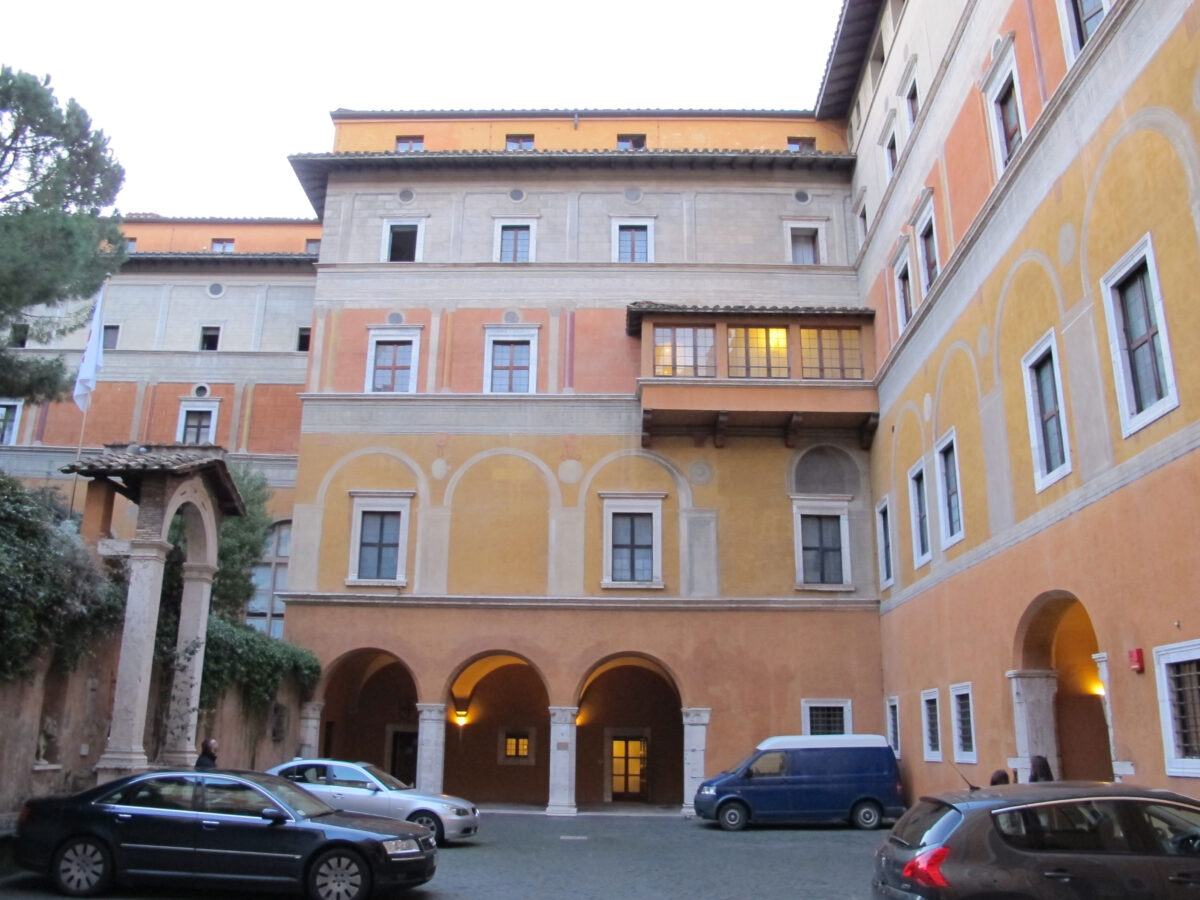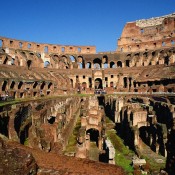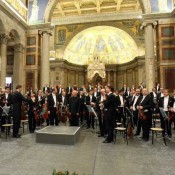Structures and decoration details which match the description of Nero’s theater in literary sources have come to light during archaeological excavations conducted in the garden of the Palazzo della Rovere, the headquarters of the Equestrian Order of the Holy Sepulchre of Jerusalem. The remains concern the left part of the hemicycle of the cavea, marble columns, stucco decorated with gold leaf and storage rooms for costumes and backdrops.
“It is a discovery of exceptional importance”, comments special superintendent of Rome Daniela Porro, “which provides evidence of the place where Nero rehearsed his poetic and singing performances, known from ancient sources but never found. Of great interest are also the medieval buildings discovered in this important area of the city”.
The excavations, which began in 2020 under the scientific direction of Renato Sebastiani and continued by Alessio De Cristofaro, archaeologists of the Superintendence, and conducted in the field by Marzia Di Mento with her team of archaeologists, have led to important discoveries of both the remains of the Horti Agrippinae, where Caligula had built a large circus for chariot-racing and Nero built a large theater. “The size of the building, the beauty of the decorations and the materials used”, according to archaeologist De Cristofaro, “suggest an imperial commission, so we can presume that it is Nero’s theater, just as Pliny Suetonius and Tacitus had described it”. “The archaeological discoveries at Palazzo della Rovere” explains the archaeologist Renato Sebastiani “have provided a rare look into the medieval history of Rome”.
The ongoing archaeological investigation has rendered exceptional finds ranging from the late period of the Roman Republic to the 15th century, which enhance the beauty of Palazzo della Rovere. There are very rare examples of coloured glass goblets, jugs and pottery pieces, animal bones crafted into musical instruments etc., as well as numerous objects related to pilgrimage such as rosary beads and bronze amulets. Of notable importance is also the discovery of several road tracks connecting the site to the Portus Maior, the landing place on the Tiber downstream of Ponte Sant’Angelo. Two pilgrim insignia (showing the Volto Santo di Lucca and Our Lady of Rocamadour) and a flask in the shape the “Gallo di San Pietro” were unearthed from the destruction layers of the roads.





